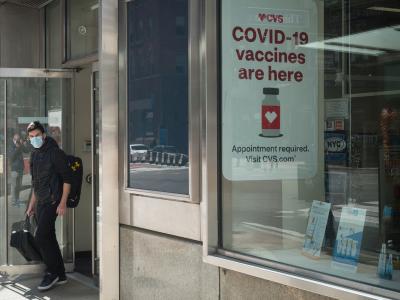New camel-related MERS case reported in Saudi Arabia
After of week of no updates, the Saudi Arabian Ministry of Health (MOH) reported a new case of MERS-COV today in a man who had direct contact with camels.
The 54-year-old Saudi man lives in Al Kharj, and is in stable condition after presenting with symptoms of MERS-CoV (Middle East respiratory syndrome coronavirus). He had direct exposure to camels, which can transmit the disease to humans.
So far Saudi Arabia has reported 1,581 MERS-CoV cases, 659 of them fatal, since the virus was first detected in humans in 2012. Ten people are still being treated for their infections, the MOH said.
Mar 27 MOH update
Vietnam reports more H5N1; 2 European countries report H5N8
In highly pathogenic avian flu developments, Vietnam reported another H5N1 avian flu outbreak and two European countries –Greece and Poland—reported more H5N8 in poultry, according to the latest updates from the World Organization for Animal Health (OIE).
Vietnam's H5N1 outbreak began Mar 20, affecting backyard birds in Hau Giang province in the southern part of the country. The virus killed 200 of 891 susceptible birds, and vaccination and stamping out were among the response steps. Since February, Vietnam has reported several H5N1 outbreaks, and veterinary authorities are also battling highly pathogenic H5N6.
Elsewhere, Greece's latest H5N8 outbreak began on Mar 15 in backyard poultry in the Western Macedonia region in the northwest, where the virus killed all 140 susceptible birds. Poland's latest H5N8 outbreak also involved backyard poultry, this time in Malopolske province in the south. The event began on Mar 15, killing 13 of 23 birds.
Mar 25 OIE report on H5N1 in Vietnam
Mar 25 OIE report on H5N8 in Greece
Mar 24 OIE report on H5N8 in Poland
Meningitis outbreak in Nigeria strikes 5 states, prompts vaccination
Since December, Nigeria has reported 1,407 suspected meningitis cases, 201 of them fatal, with Neisseria meningitides C—a strain not covered by the MenA conjugate vaccine—the predominant subtype, the World Health Organization (WHO) said in a Mar 24 statement.
Cases have been reported in 5 of Nigeria's 36 states, though 89% are from Samfara, Katsina, and Sokoto states. Three of the affected cities share borders with Niger.
Children ages 5 to 14 years old are the hardest-hit group, with both sexes almost equally affected.
The Nigeria Centers for Disease Control and Prevention, with support from the WHO, is leading the response, and rapid response teams are conducting active case finding. A meningococcal ACWY vaccine campaign in the city of Bora in Zamfara state reached 19,600 people. The International Coordination Group (ICG) has approved 500,000 doses of meningococcal AC polysaccharide vaccine and injection supplies for use in Zamfara, which is slated to arrive today. Katsina state is preparing an ICG request for vaccine.
Though a successful rollout of MenA conjugate vaccine has decreased levels of meningitis A, the WHO said other serogroups are causing epidemics. For example, an outbreak reported in February involving serogroup W in Togo is linked to at least 201 suspected cases, 17 of them fatal.
Mar 24 WHO statement
Osterholm to Trump: Rethink 'defense' spending
Defense spending means more than military and missiles, it means investing in the science and policy that will protect Americans from the looming threat of infectious disease. That's the takeaway from a Mar 24 New York Times commentary by Center for Infectious Disease Research and Policy (CIDRAP) Director Michael Osterholm, PhD, MPH, along with Mark Olshaker.
Osterholm wrote the editorial as a response to President Donald Trump's newly released budget, which slashed funding for the National Institutes of Health by almost 20% and increased defense spending.
"Those cuts will not protect American citizens," Osterholm wrote. "They will diminish research and vaccine development and our ability to respond to the growing threats of antibiotic resistance and new infectious diseases."
The recent response to Zika and Ebola outbreaks, along with the threat of avian and pandemic influenza and Middle East respiratory syndrome coronavirus (MERS-CoV), illustrate how cash-strapped federal agencies already are when dealing with infectious disease threats. Further cuts prime them to be ineffective in the face of the next global pandemic. Even more so, biological weapons of mass destruction have the potential to kill millions, but few federal dollars are being invested in vaccines and antidotes that could save lives.
Only the government, and not pharmaceutical companies, has the power to produce the vaccines needed to fight the microbes that could kill millions. And like the military, Osterholm said, you can't expect to beat the enemy by waiting until after the first shot is fired to begin preparations.
Mar 24 NY Times op-ed











